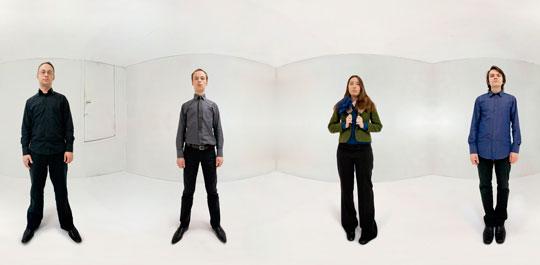
Kwartludium
“A concert is not in one direction! It’s like a circle, and the musicians must take back the energy from the public and use it in creating a good atmosphere and a good concert experience”.
The energy between musicians and audience is central to the Kwartludium ensemble, a small contemporary ensemble of violin, clarinet, percussion and piano. Formed in 2002 and constantly commuting between the cities of Warszawa and Gdansk, the ensemble works with improvisations, graphic illustrations of the music and good old fashioned talking-with-the-audience as ways of securing the energy and understanding between the musicians and the listeners.
Being one of the most prominent Polish contemporary ensembles, Kwartludium has toured most of Europe, as well as frequently performing in the major Polis concert halls and collaborating with the Polish Radio Orchestra. Cross-over projects are not foreign to Kwartludium either: In 2008, during the 51st ‘Warsaw Autumn’ Festival the ensemble took part in a unique project, performing compositions written by Polish and Latin American composers - for beatboxers and Kwartludium.
Kwartludium has shared the following New:Aud resources:
Let's play with the new music
The Polish ensemble Kwartludium mixed concert and workshops for children based on the belief that new music should be reachable for the young audience – the audience that is the most open minded. They made two concerts; one for the 4-7 year olds and one for the 8-12 year olds. Both concerts took place at the National Gallery of Art ZACHĘTA and were a great success. This report describes the concept and shares the thorough evaluations made. Throughout the event a number of children where being observed for the ensemble to learn from their reactions. Furthermore an evaluation game was made with the children after the event, as well as a focus group interview with some of the parents.
Lets have fun in the Philharmonic!
The Polish ensemble Kwartludium mixed concert and workshops for children aged 4-12 years – the audience that is the most open minded. 110 children participated in the event at a traditional concert hall. They listened to the new music with interest and remained concentrated during the whole event. They were eager to participate in all the proposed games and activities. This report describes the concept and shares the thorough evaluations made from observations of the children, evaluation games and a focus group interview with the parents.
